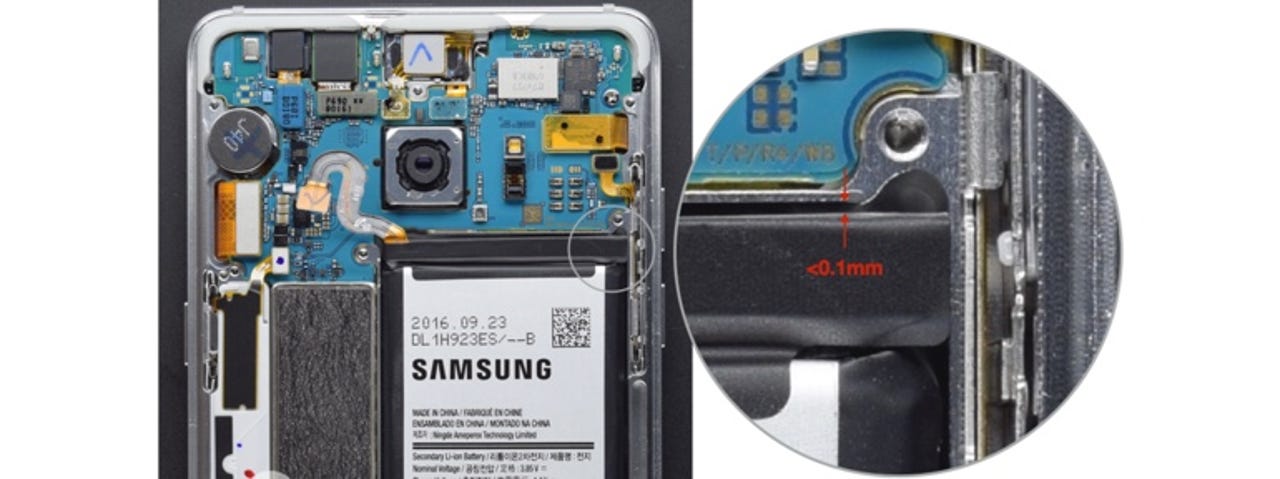Galaxy Note 7 fires likely caused by 'super-aggressive manufacturing process'


The tolerance between the battery and the chassis in the Galaxy Note 7 could be as small as 0.1mm.
Manufacturing engineering company Instrumental has carried out a teardown of the Samsung Galaxy Note 7, and it believes it has found the cause of the battery fires and explosions.
See also: iOS tip: Here's how to switch on a hidden shortcut menu on your iPhone or iPad
According to Instrumental, the problem came down to a "super-aggressive manufacturing process."
In a nutshell, here's the problem:
- Manufacturers want to make their devices as thin as possible
- That means making the batteries thinner
- The thinner a lithium-ion battery, the less electrolytic separator there is keeping the lithium cobalt oxide anode from coming into contact with the graphite cathode
- Physical stress, either from being in a pocket or from heat build up (either environmental or from charging), can deform the battery, potentially causing the anode and cathode to come into contact
- If the anode and cathode come together, then you have problems (in the form of fires and potential explosions)
"Samsung engineers designed out all of the margin in the thickness of the battery, which is the direction where you get the most capacity gain for each unit of volume," wrote Anna Shedletsky, CEO and founder of Instrumental.
How to make the rechargeable battery in your smartphone, tablet or laptop last for years
Another potential problem with Samsung's design is that the battery hasn't been given much room to expand. Some of the tolerances between the battery and the roughly CNC-machined aluminum chassis are as small as 0.1mm. During the charging process a battery expands, and because of the tight tolerances it is possible for the battery to be punctured, again potentially resulting in fires and explosions.
"In this case, Samsung took a deliberate step towards danger," wrote Shedletsky, "and their existing test infrastructure and design validation process failed them. They shipped a dangerous product. That this is possible at one of the top consumer electronic companies in the world is humbling -- and demonstrates the need for better tools."
See also: